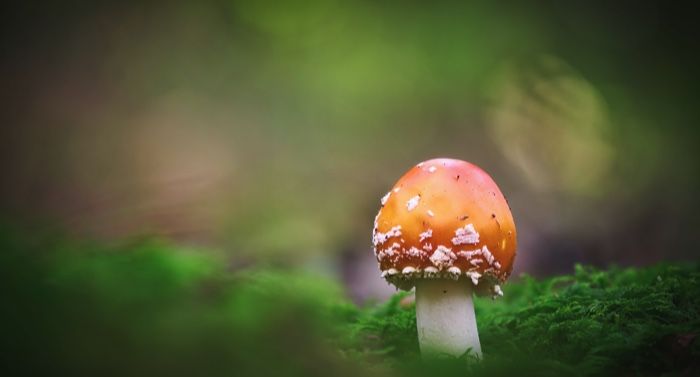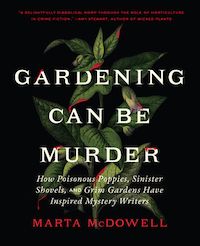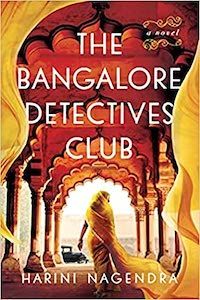
What Murder Mysteries Get Wrong about Gardens and Poisonous Plants
Murder mysteries and gardens go together like peanut butter and jelly or milk with cookies. Many of the classic detectives, from Ms. Marple to Nero Wolfe, have a preoccupation with gardens and/or plants. And with gardens and plants, there are poisonous plants awaiting a murderer’s deft touch.
But there’s so much more to the world of gardening and mysteries. In Marta McDowell’s recently released Gardening Can Be Murder: How Poisonous Poppies, Sinister Shovels, and Grim Gardens Have Inspired Mystery Writers, McDowell explores the many ways that gardens and mysteries intertwine, whether it is a character’s hobby, a motive for murder, or even the location of the murder.
With McDowell’s work in mind, I naturally thought about what murder mysteries may get wrong about the world of gardens (and poisonous plants). I decided to reach out to McDowell about her work and thoughts, as well as Dr. Justin Brower, forensic toxicologist at NMS Labs, who writes the blog Nature’s Poisons.
Why Gardens and Mysteries?
Before digging into the difference between real life and mysteries, I wanted to know why gardens feature so prominently in murder mysteries. In a conversation with McDowell, garden writer and teacher at the New York Botanical Garden, she said that it’s a matter of contrasts. “We tend to default to thinking of a garden as being like paradise,” McDowell said, then “there’s a murderer, there’s evil.”
McDowell also pointed out that a lot of mystery writers themselves were gardeners, notably Rex Stout (author of the Nero Wolfe series) and Agatha Christie. But being a gardener requires being a bit of a detective. “It’s always a puzzle,” McDowell said, for instance, “I’ve got two of the same plants. One is doing really well and one of them is just fading. [Why?] I sometimes go out into the garden with a magnifying glass.”
Brower thinks that part of the appeal of gardens in mysteries is their ubiquity. They are all around us; we may not have a garden ourselves, but we know people around us who do. While familiarity is part of the equation, when it comes to poisonous plants, there’s an “air of mystery around poisonous plants,” he said. People know plants can be poisonous, but they don’t know the toxics within them, nor how deadly or safe they can be.
Plant Poisonings Are Prevalent But Not Deaths
One of the things I learned while studying poisons is that many common houseplants can be toxic to animals and children. McDowell noted that while not all plants are poisonous, more than you would expect are. She said, “plants do not come with warning labels.” Plants like azaleas, aloe vera, lilies, castor bean plants, and philodendrons are just a few plants that seem safe but are toxic.
And poisonings do happen. Brower noted, “Calls due to plant ingestions or plant poisonings are always in the top 10.” But thankfully, most of those end up being not harmful at all; often, it’s a child who has ingested something and the parent doesn’t know what to do.
But deaths tend to be relatively rare. In his post-mortem work, where he’s done 10,000+ cases, he can count on one hand the number that involved plant poisoning, which were often accidental or self-administered. So, while poisonings seem to be everywhere in mysteries, that’s really just in fiction. Thank goodness!
Poisoning Someone is Challenging
Another aspect about plant poisonings (and poisonings in general) is that it’s actually quite hard to poison someone, from figuring out how to administer it to getting the proposed victim to consume it. Brower noted that you really have to be physically and emotionally close to someone to be able to pull it off. For instance, if you brought cookies with arsenic to your arch nemesis, they are going to wonder why you were doing that, “No one’s falling for that,” Brower reasoned. To take the time to poison someone, “you have to be kind of a real psychopath to actually go through with it,” Brower explained, “there are just other methods around if you really wanted to harm somebody.”
Avoiding Real-Life Poisons
While some research is needed to figure out which plant would work as a murder weapon and how, McDowell noted, “Some authors avoid the topic entirely by making up a plant.” She cited how Lloyd Shepherd created a poison for his work, The Poisoned Island. Kate Khavari, the writer behind the Saffron Everleigh Mystery series with her A Botanist’s Guide To X, also makes up poisonous plants for her work. We all know there are potent plants, but she does not have to worry about the accuracy of it all. So, plant poisonings can be really hard to pull off correctly, and some authors just avoid it altogether.
Gardening is Drudgery
While gardens are pretty, they require a lot of work. McDowell is an avid gardener, but she noted, “lots of gardening is boring.” There’s weeding, pruning, digging holes, to name a few monotonous activities.
Some people might find zen in the work, but McDowell does not. In books with avid gardeners, it’s notable that we don’t see that hard work in the pages. For instance, Nero Wolfe spends four hours a day, in two-hour intervals, up in his greenhouse with his orchids, but aside from occasional glimpses, we don’t spend much time with him and his orchids.
Glossing over these facts makes the story more interesting; who would want to read a murder mystery book where 95% of it is just about the narrator digging holes to plant tulip bulbs?
So, those are just a few ways that murder mysteries may not be entirely accurate about gardens and poisonous plants. If you are interested in reading more, here are my articles on what mysteries get wrong about bail bonds and what mysteries get wrong about the courtroom.
And if you are looking for mysteries that involve gardens, plants, and flowers, check out The Bangalore Detectives Club by Harini Nagendra, where the body is found in a garden. In Fatality in F, book 4 of the Gethsemane Brown series by Alexia Gordon, there’s an annual rose and garden show where tempers run hot. And Naomi Hirahara’s Gasa-Gasa Girl, book 2 in the Mas Arai series, features a gardener as the detective and a body found in a koi pond.












